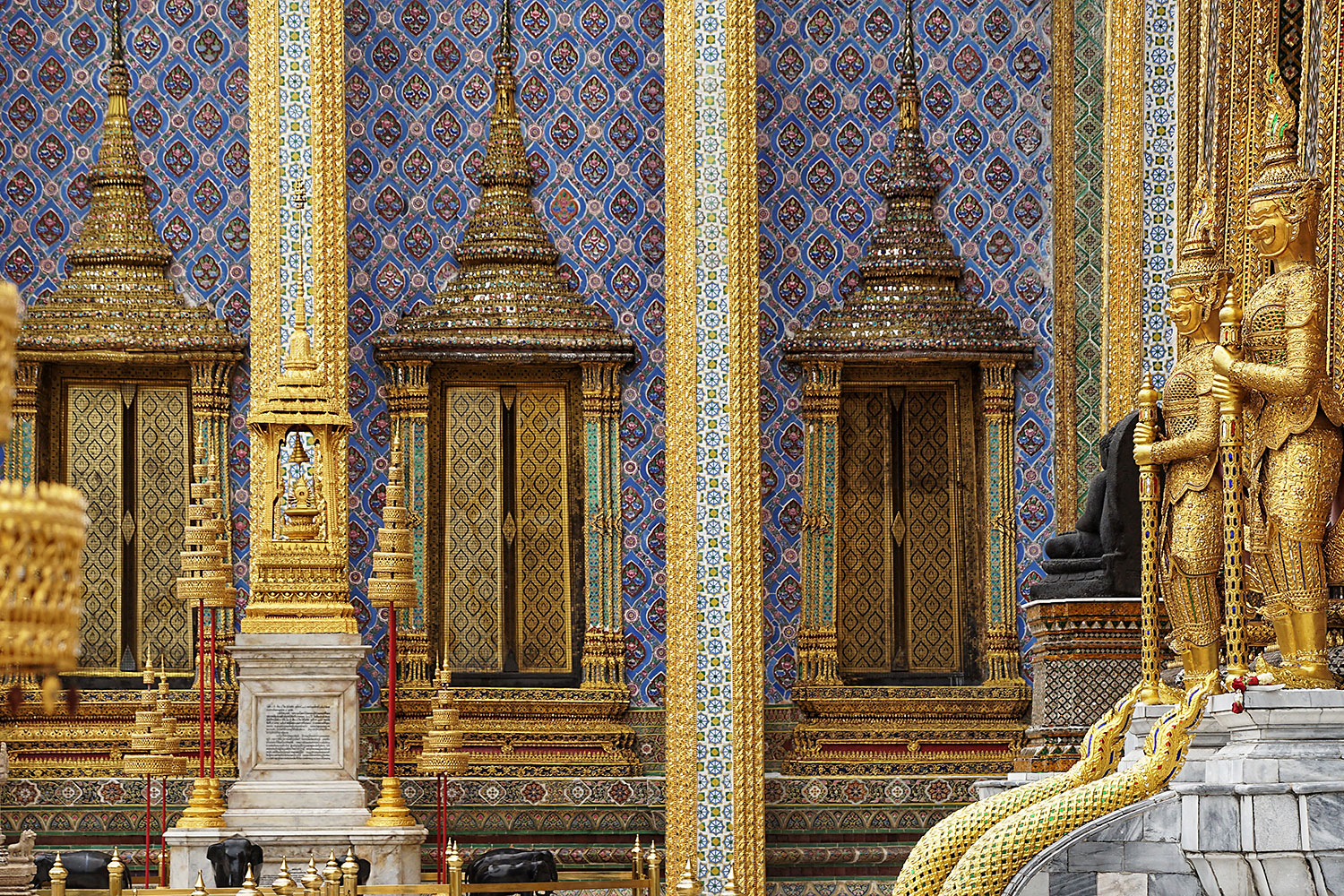
While the Covid-19 pandemic and the resulting border closure has brought about considerable economic impact, not everything is bad news. At the Temple of the Emerald Buddha, which is part of the Grand Palace, the long-lost ambience of tranquillity has returned.
The royal temple, whose official name is Wat Phra Si Rattana Satsadaram, is popularly shortened as Wat Phra Kaew. Both names refer to the Buddha image carved out of green jasper that King Rama I brought back from Vientiane when he was a general of King Taksin during the brief Thon Buri period.
Later in 1782 when King Rama I established Bangkok as the new capital, which marked the beginning of the Rattanakosin period, he had a temple built within the palace grounds and made the Emerald Buddha its principal image. The word Rattanakosin, by the way, means "the repository of the gem image".
The Emerald Buddha is a well-travelled statue. It was first discovered inside a stupa in Chiang Rai, which was struck and damaged by lightning during the reign of Phya Sam Fang Kaen (1402-1441) of the northern Lanna Kingdom. It soon was removed and housed in Lampang for 32 years, then Chiang Mai for 84 years before it spent 12 years in Luang Prabang, 214 years in Vientiane, and six years in Thon Buri.
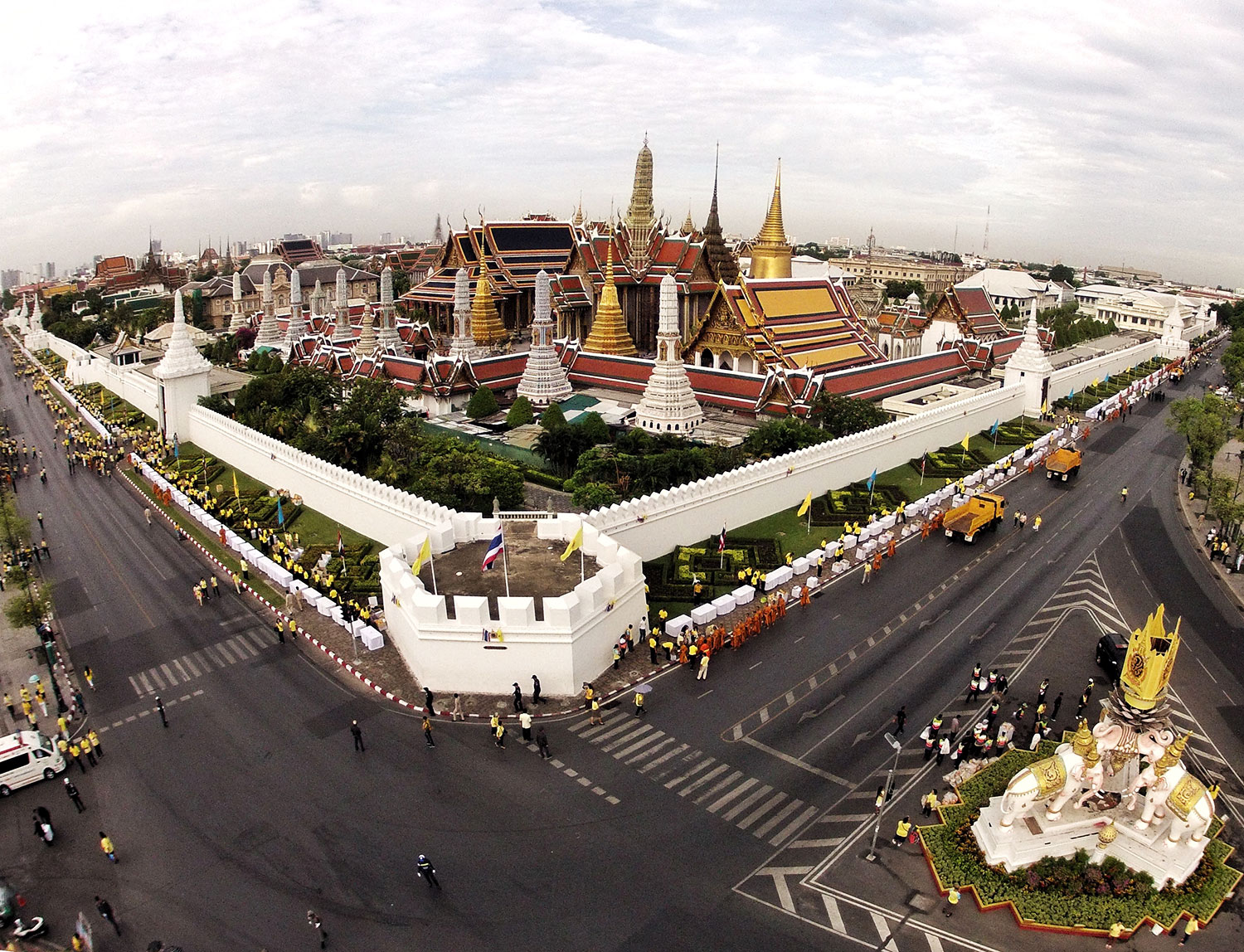
Wat phra Kaew is nestled in the northeastern corner of the Grand palace. on the right side of this aerial photograph is the northern wall where the Viseschaisri Gate, the public entrance to the royal complex, is located. From there, you need to walk southwards for about 100m and enter the temple from its west side. (Photo: PattaraPong ChatPattarasill)
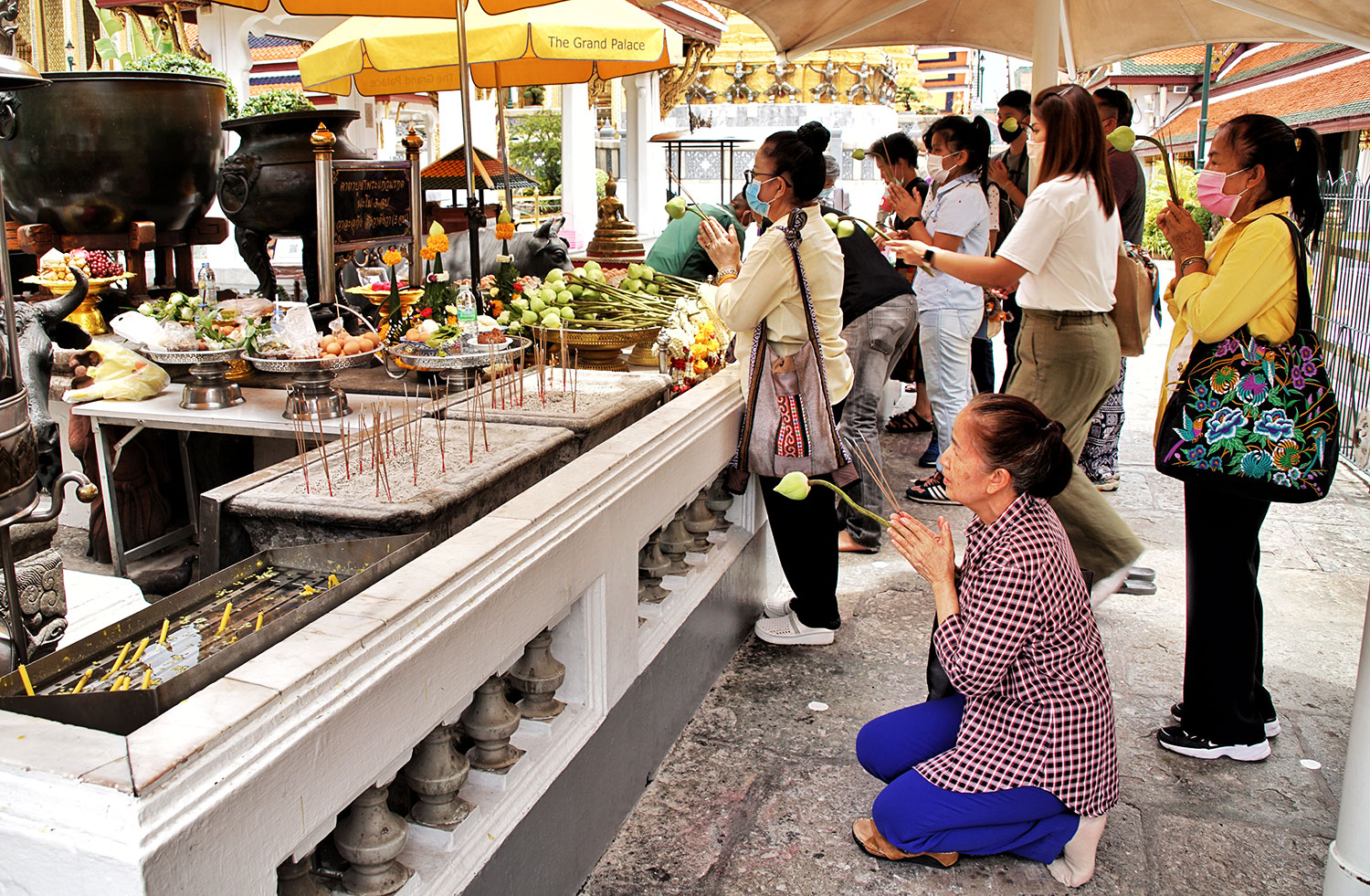
Over the past couple of months, since the Temple of the Emerald Buddha reopened after the Covid-19 lockdown, worshippers could pray in peace. Bangkok’s top tourist attraction is now what it was meant to be, a sacred place of worship. Meanwhile, art and culture lovers can leisurely appreciate the majestic architectures and all forms of art they incorporate without having to wade through noisy crowds as usual.
The Emerald Buddha is highly respected by Thai people, so much so that the ultimate way to prove the truthfulness of one's words is to say them in front of this Buddha image in Wat Phra Kaew since it is believed nobody dares to lie to the sacred statue.
The temple's Phra Ubosot (ordination hall) and other original structures were completed two years after King Rama I moved the capital to this side of the Chao Phraya partly to use the river as protection from the Burmese, who overran Ayutthaya 15 years earlier. As expected, in 1785 King Bodawpaya, whom the Thais called Phrachao Padung, led massive armies of 144,000 men to attack the new Siamese capital from several directions. But unlike Ayutthaya, Bangkok did not wait for the invaders to reach and siege the city. King Rama I sent his forces out to fend off the enemies in Kanchanaburi and other provinces. With effective intelligence and tactics, the Thais managed to force the much larger invading armies, which were plagued by supply shortages, to retreat.
Wat Phra Kaew, as a result, did not suffer the same fate as Wat Phra Si San Phet, which was the royal temple within the Grand Palace of Ayutthaya.
During the later reigns, a number of new structures were added to the temple. Some were built to replace older ones, which were crumbling or destroyed by fire. A number of structures were rebuilt or repurposed. All, of course, were done with top craftsmanship. After more than two-and-a-half centuries, the result is splendid.
Over the past several decades, the temple has been visited by people from around the world. The current state of peacefulness is a rare phenomenon. If you're in Thailand, don't miss this chance to experience the true beauty of the Temple of the Emerald Buddha.
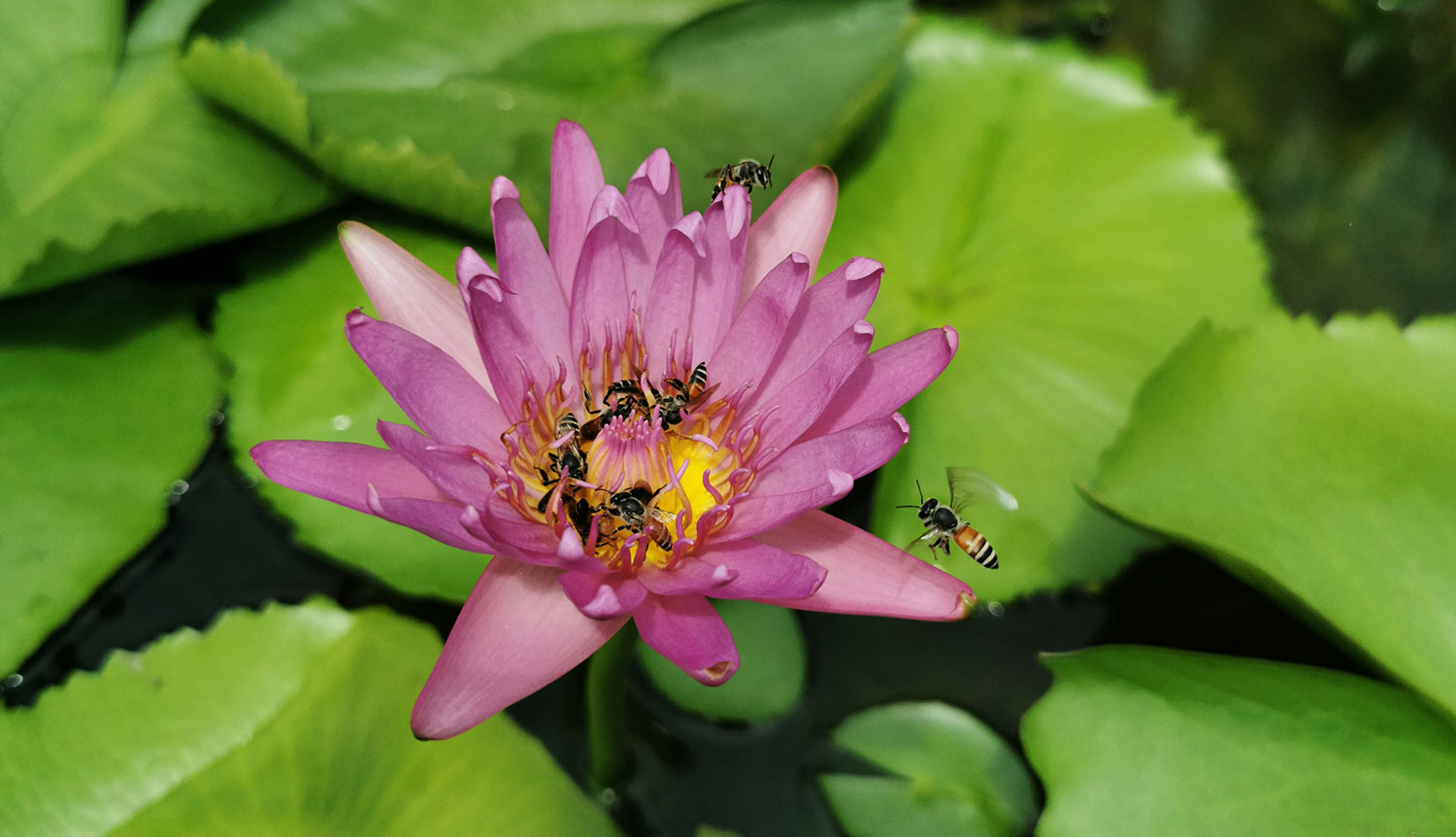
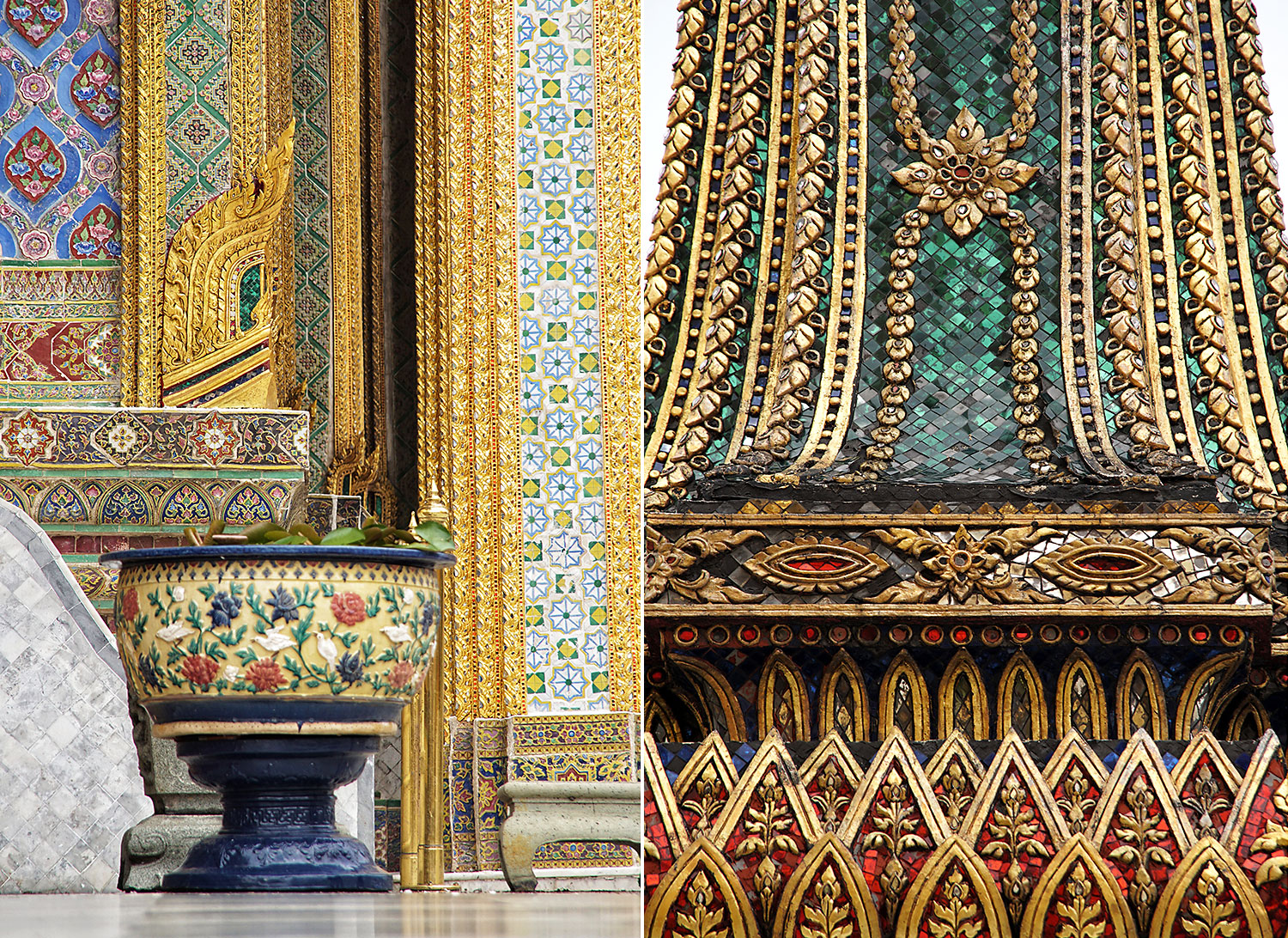
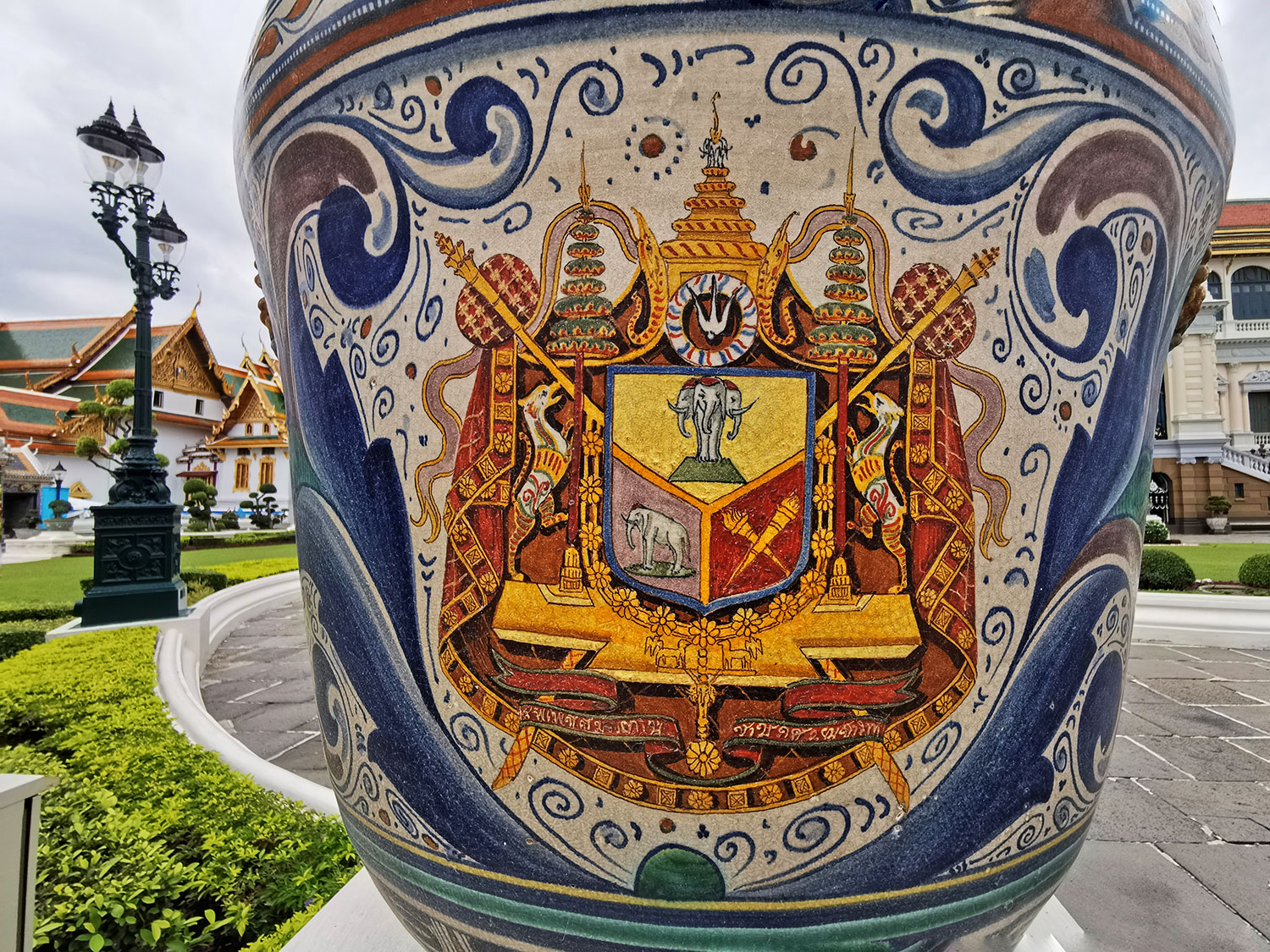
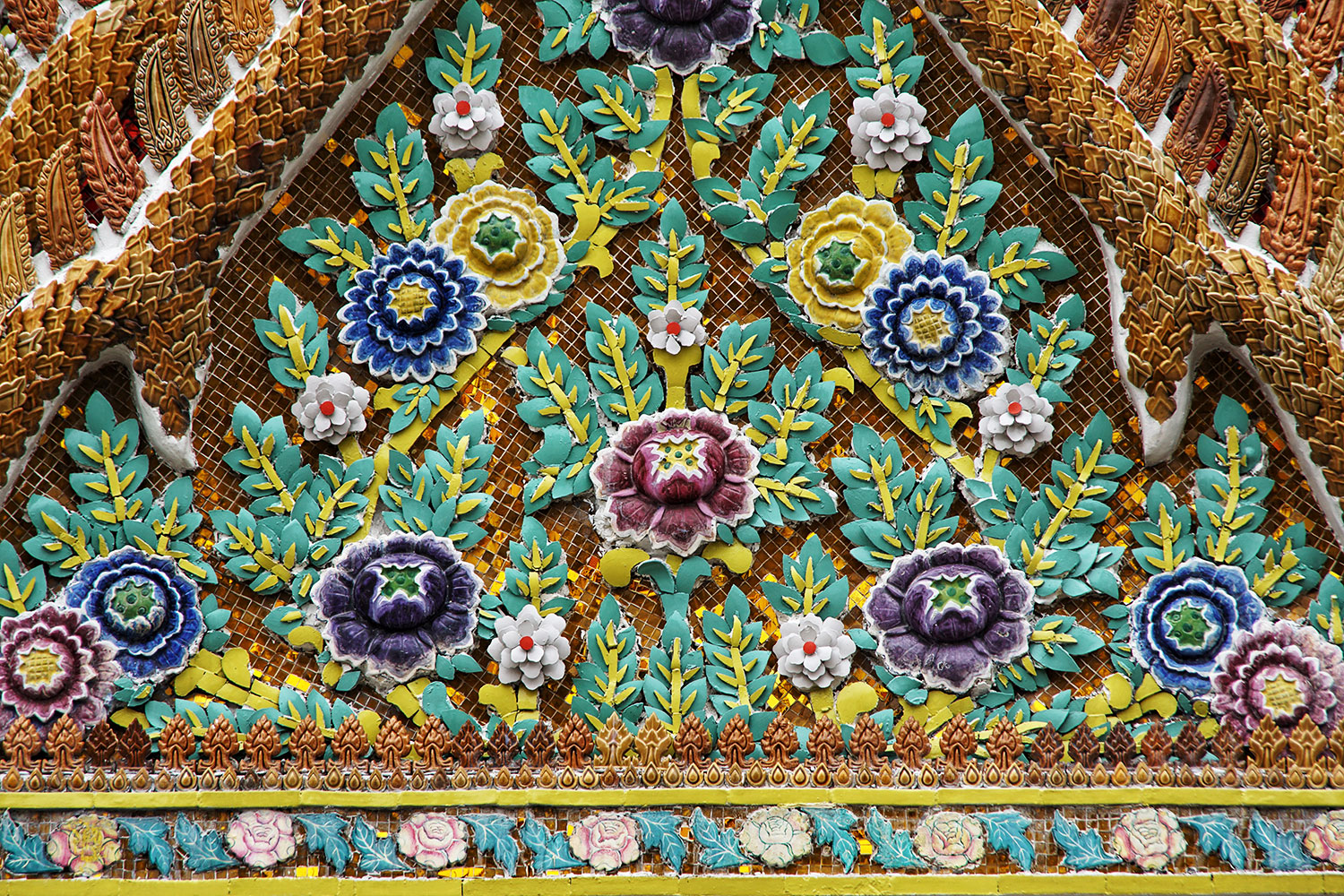
Wat phra Kaew and the Grand palace are rich with elaborate decorations. With the absence of mass tourism, you can see and enjoy more of these enchanting details.
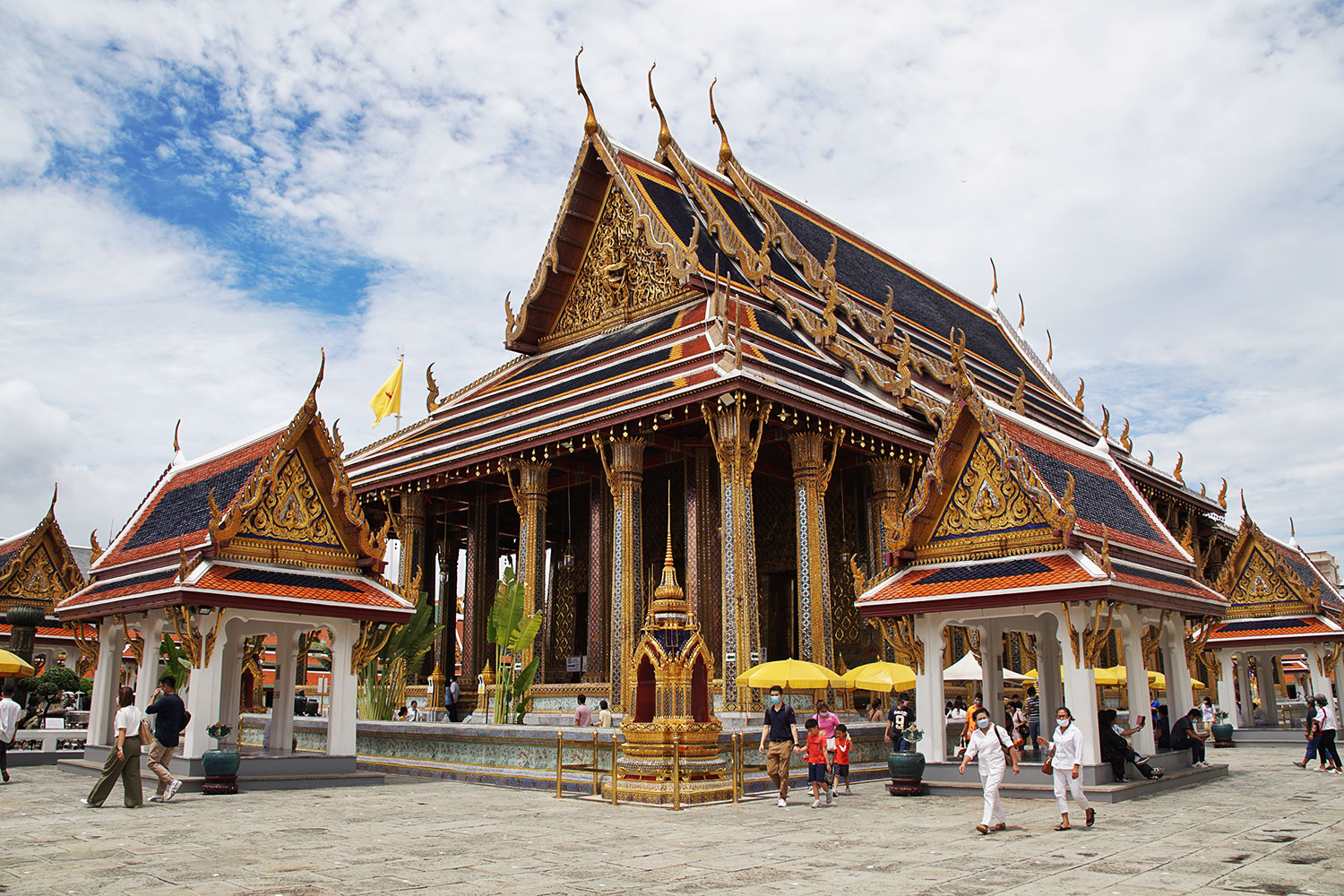
Phra Ubosot
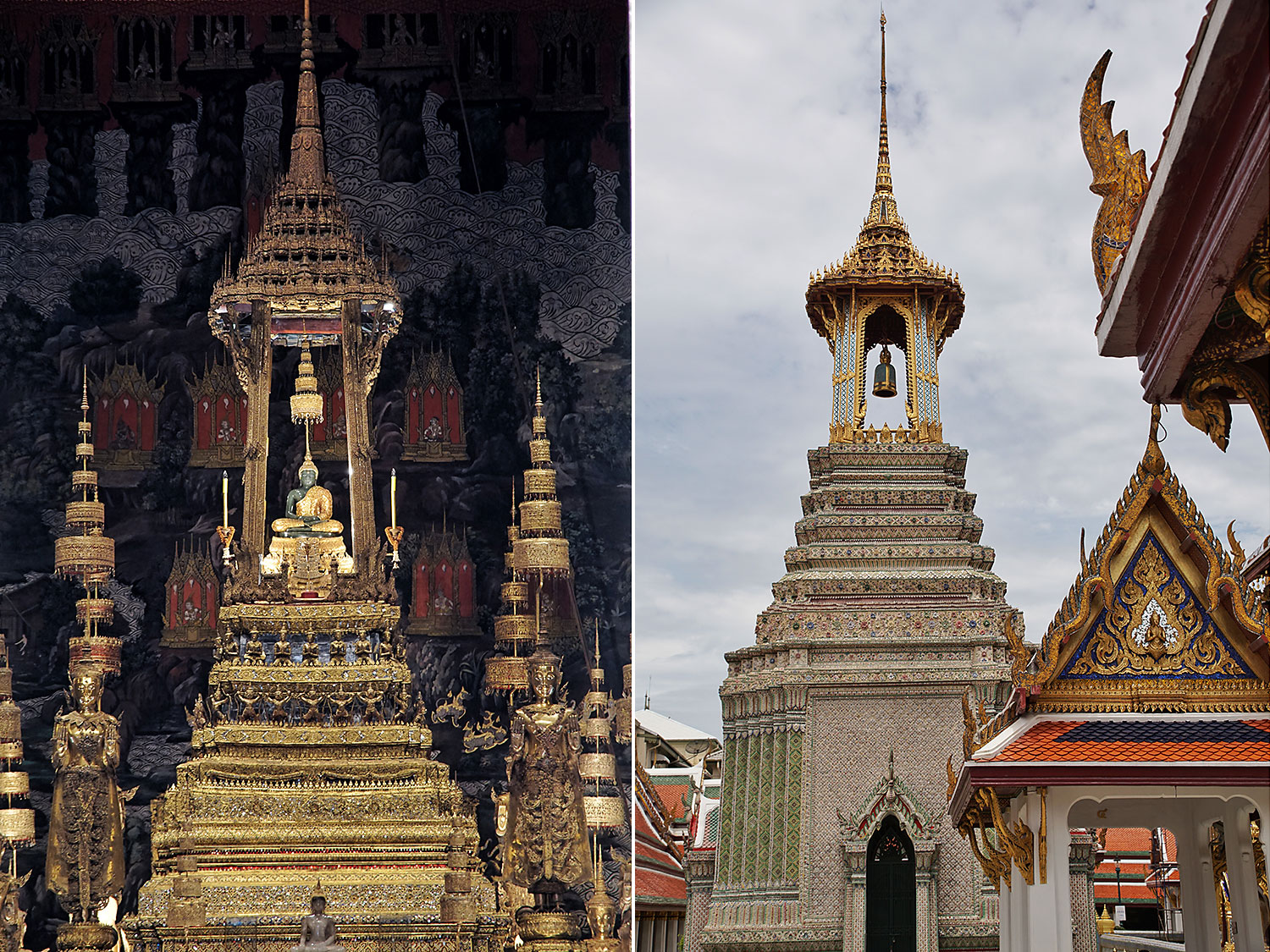
From left: The Emerald Buddha; Bell Tower
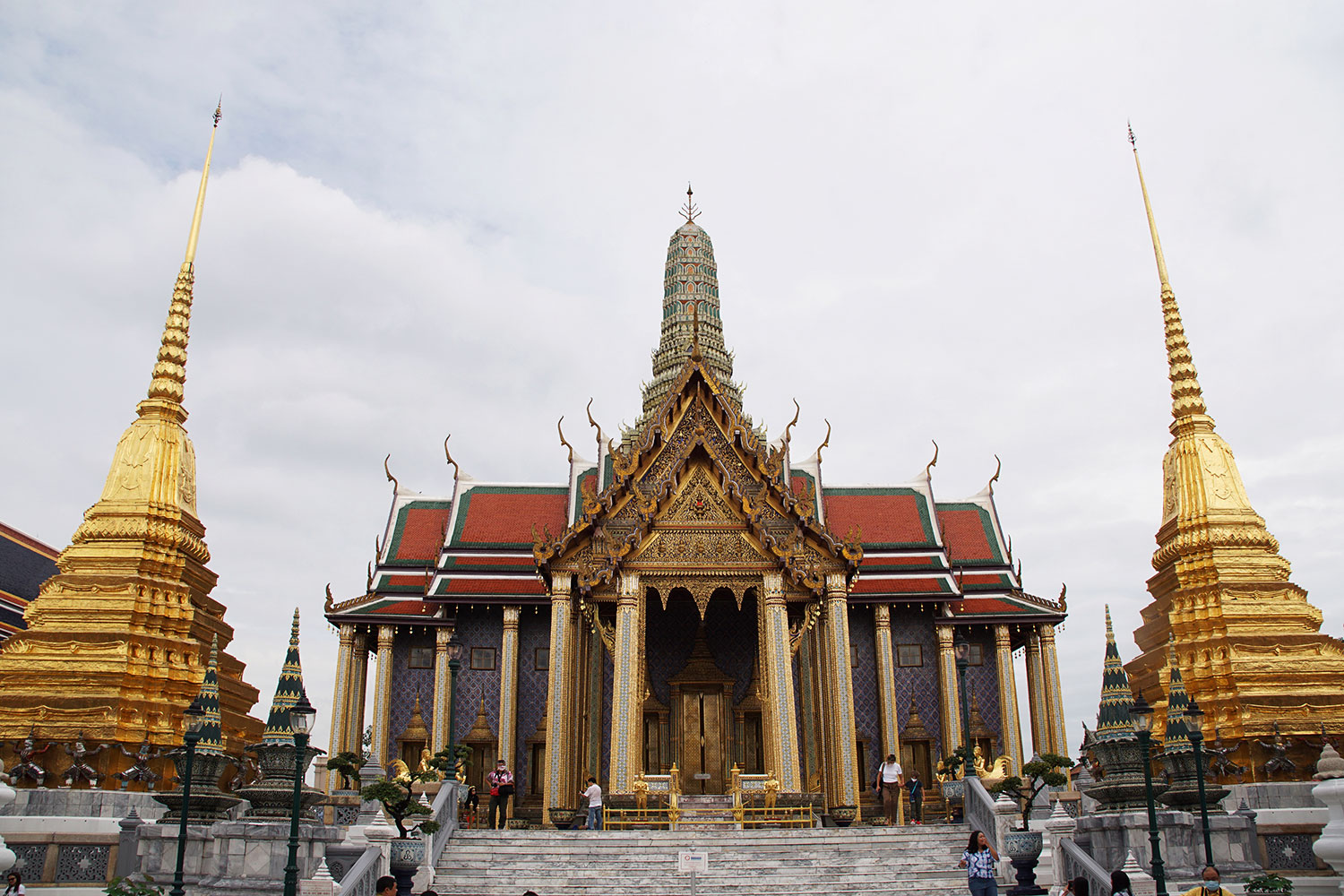
Prasat Phra Thep Bidon
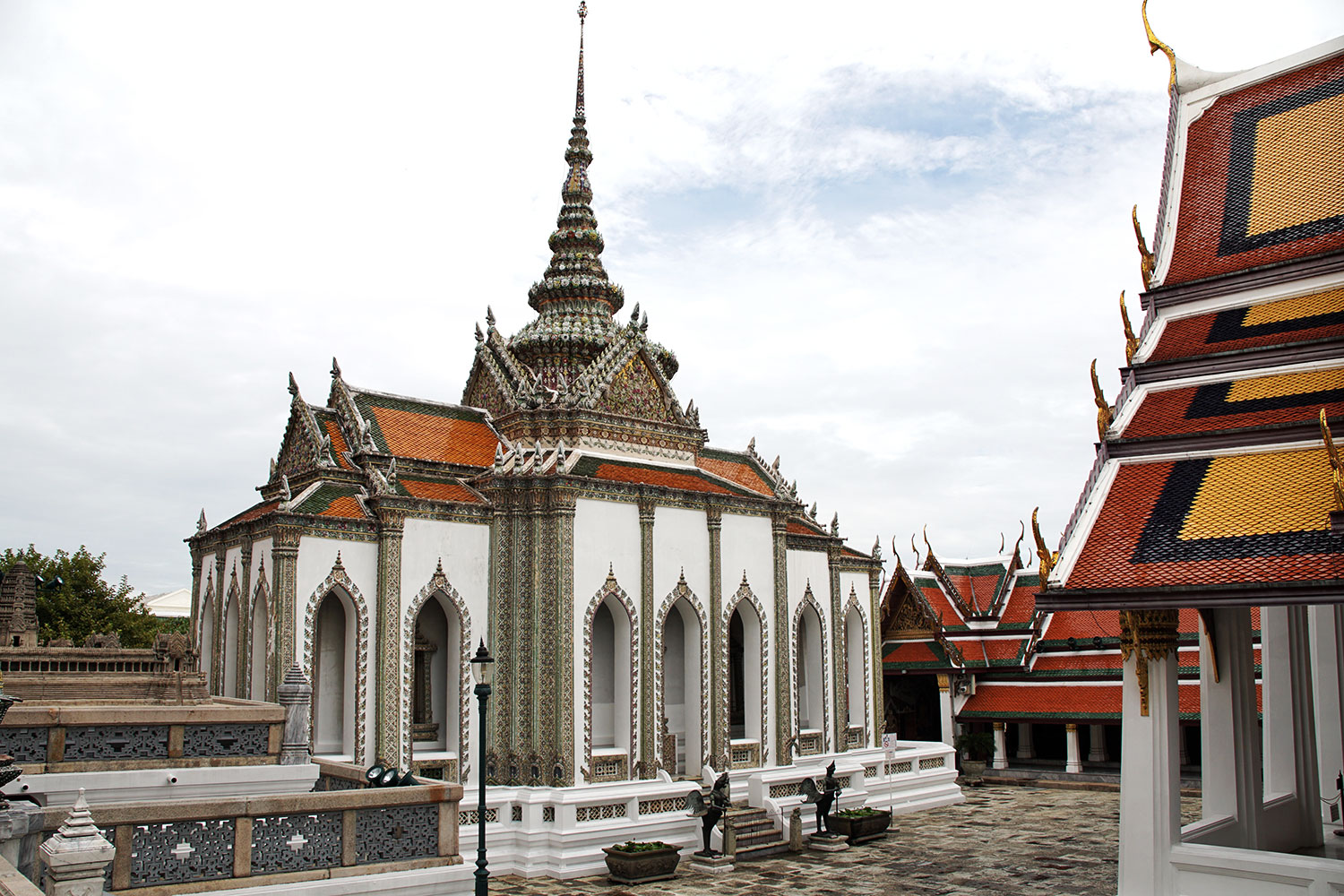
Phra Wihan Yot
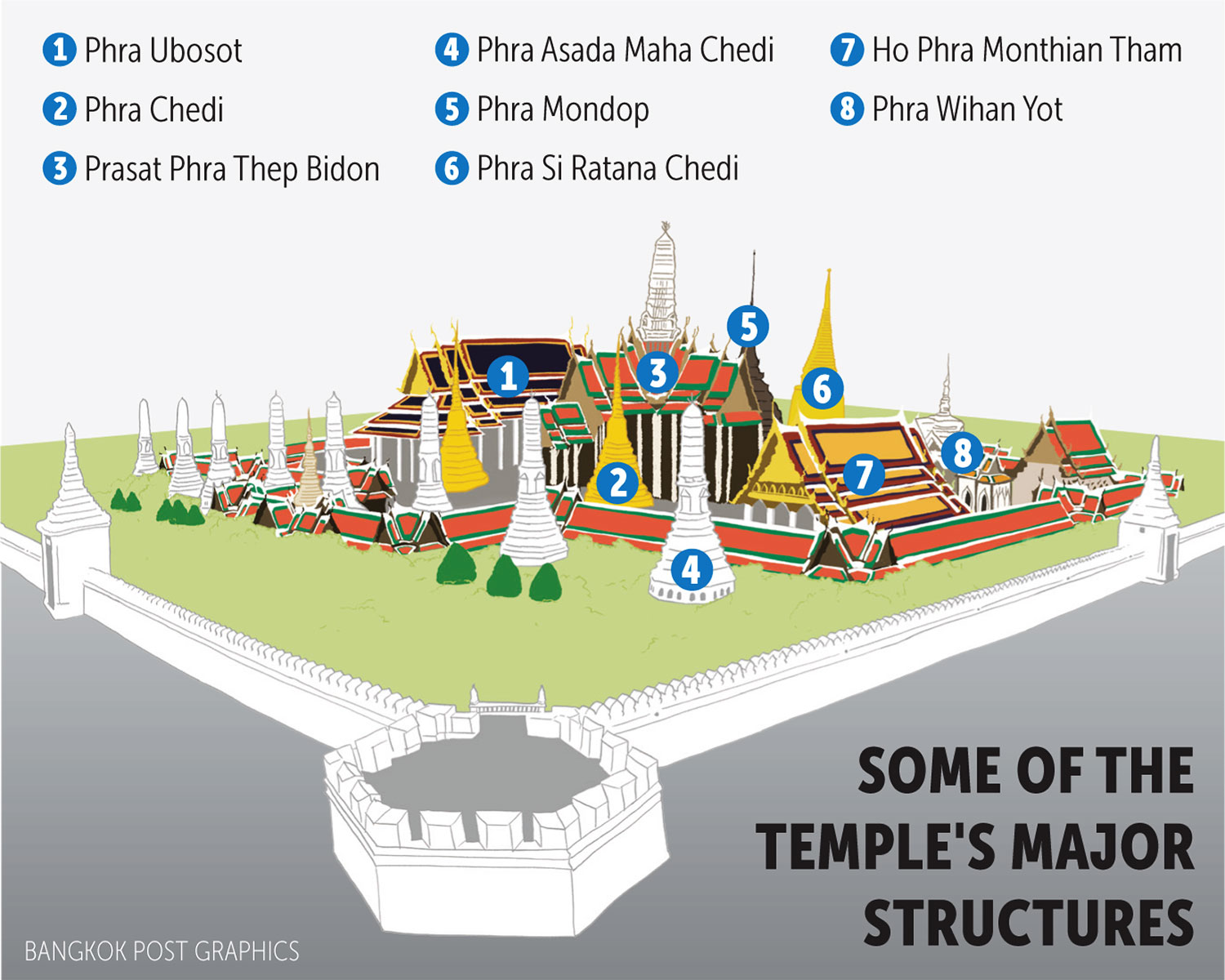
The Temple of the Emerald Buddha is made up of so many dazzling architectural gems that may get you confused. As you step into the compound through the public entrance, which is located on the west side of the temple, you’ll find right in front of you the Phra Ubosot (ordination hall) where the Emerald Buddha is enshrined. Please note though that this is the back of the hall and its entrance is located on the other end. The Phra Ubosot is surrounded by a number of buildings, including 12 pavilions and a tower housing a bell that is rung only on auspicious occasions such as the announcement of a new supreme patriarch. A few steps north of Phra Ubosot and the minor buildings around it is another group of structures built on a raised platform called Than Phaithi. They include, from west to east, Phra Si Ratana Chedi which is the temple’s largest pagoda; the square-based Phra Mondop; Prasat Phra Thep Bidon which houses statues of previous monarchs of the Rattanakosin period; and two golden stupas that King Rama I built in memory of his parents. The twin stupas, which are decorated with sculptures of demon and monkey warriors near their bases, are among the most photographed structures in the temple. To the north of Than Phaithi platform is the remaining cluster of buildings, which is made up of, again from west to east, Ho Phra Nak, Phra Wihan Yot and Ho Phra Monthian Tham. The first houses relics of King Pin Klao who was the brother and second monarch during the reign of King Rama IV, as well as relics of princes and princesses; the latter a precious collection of antique Buddha images. The last building is where Buddhist scripts are stored. Phra Wihan Yot, the white building in the middle, is fitted with doors from the Ayutthaya period which sport elaborate patterns of mother of pearl inlay. Hopefully, this grouping will help you get a better picture of the temple’s plan and make it easier to find your way around.
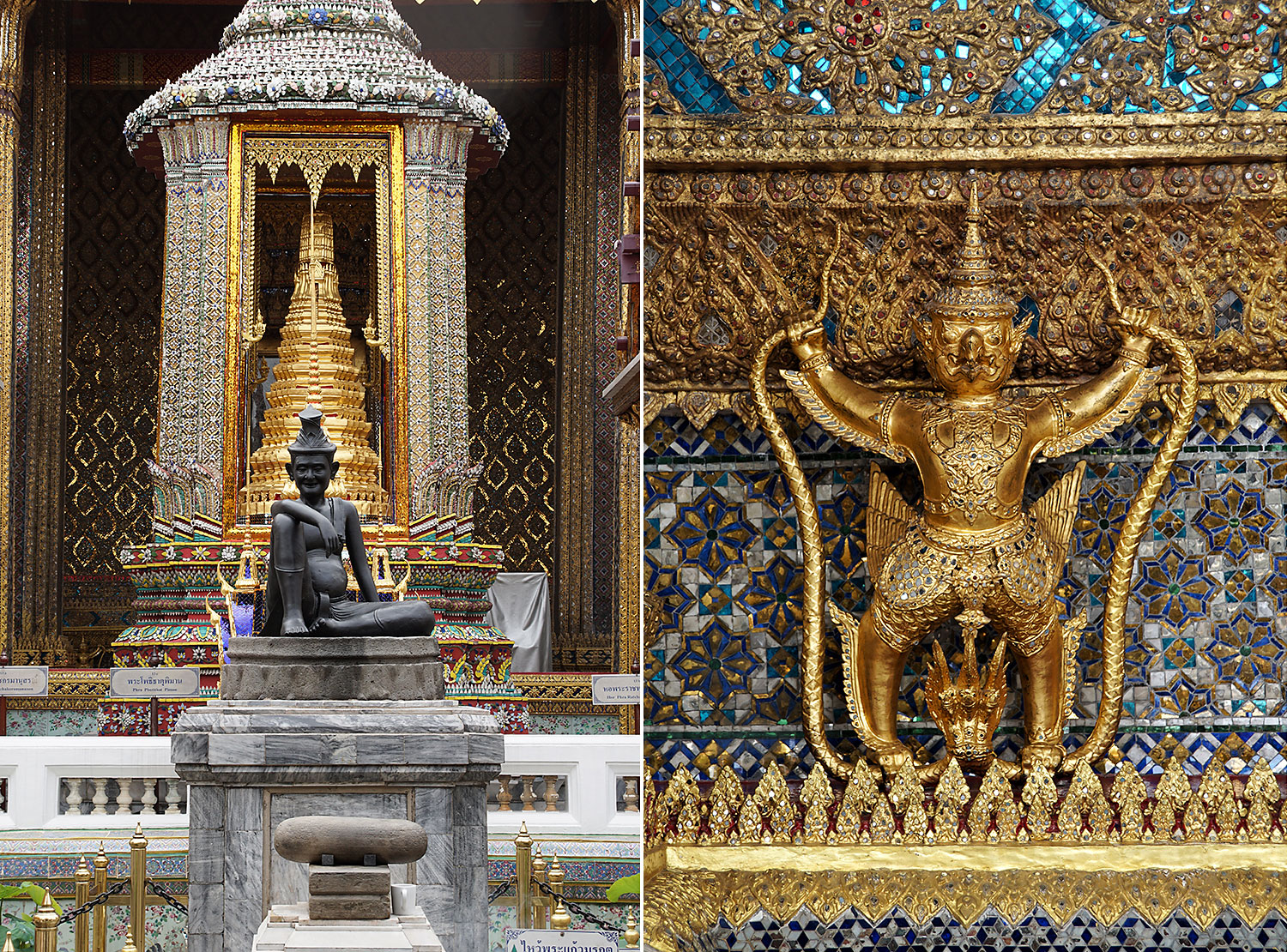
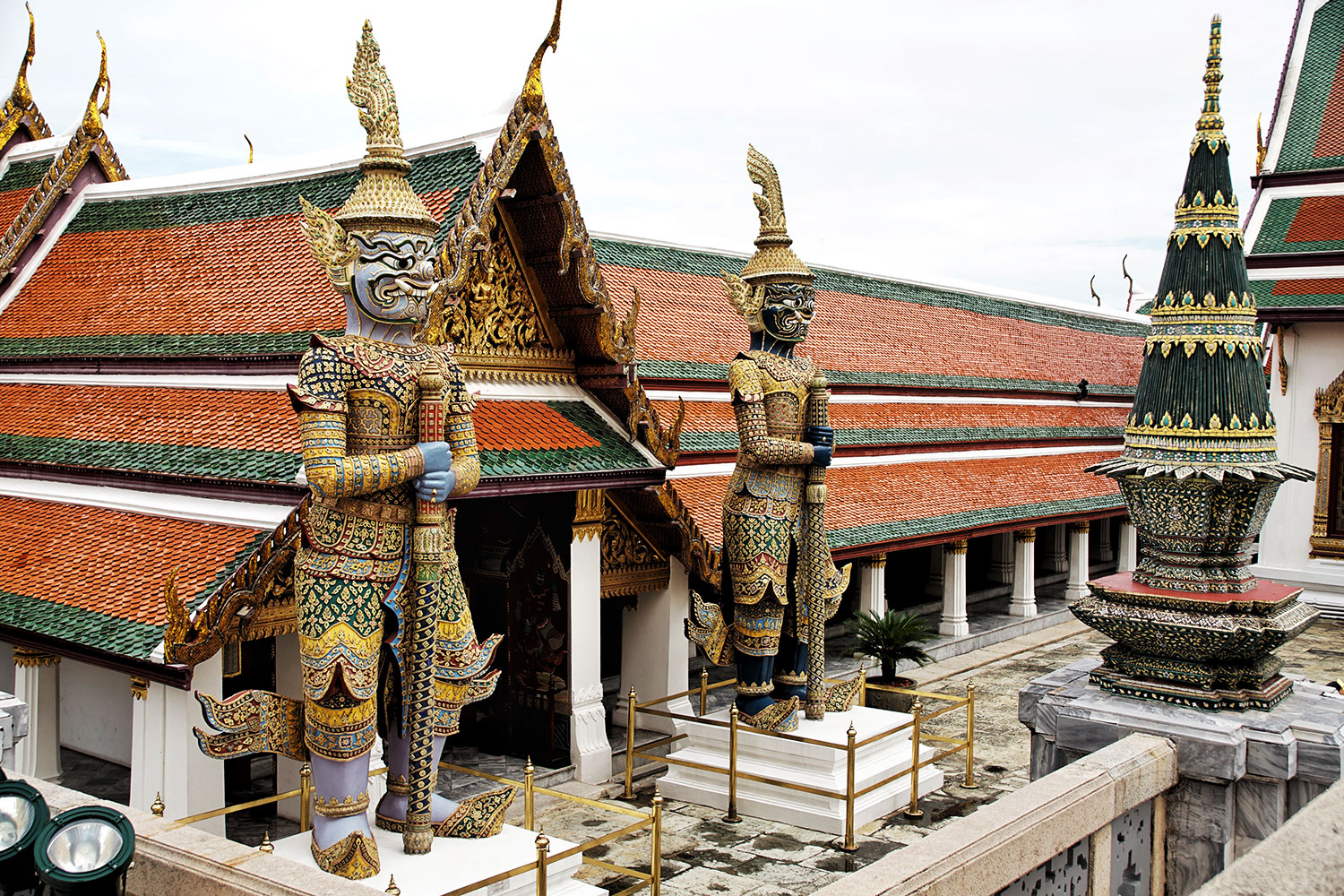
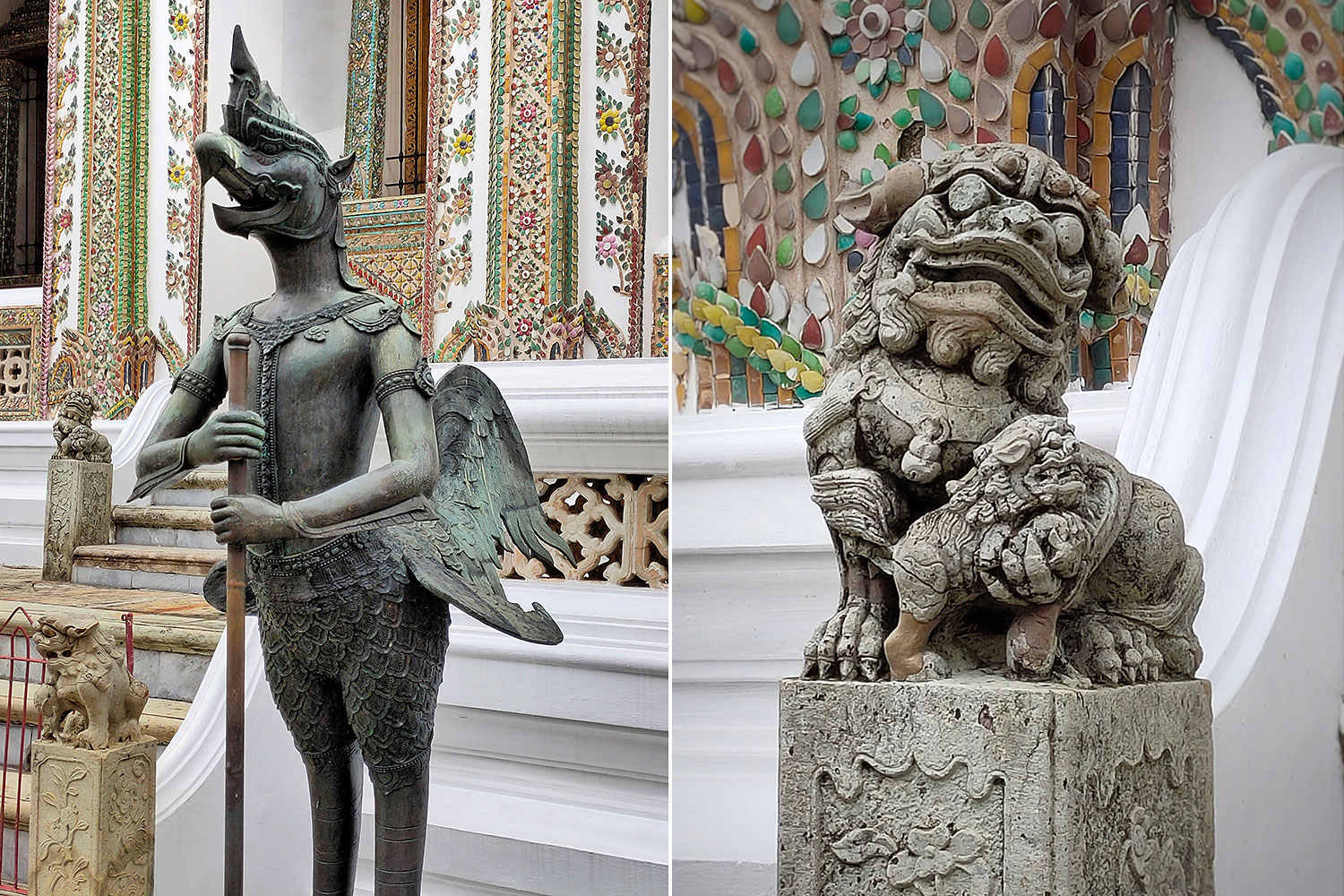
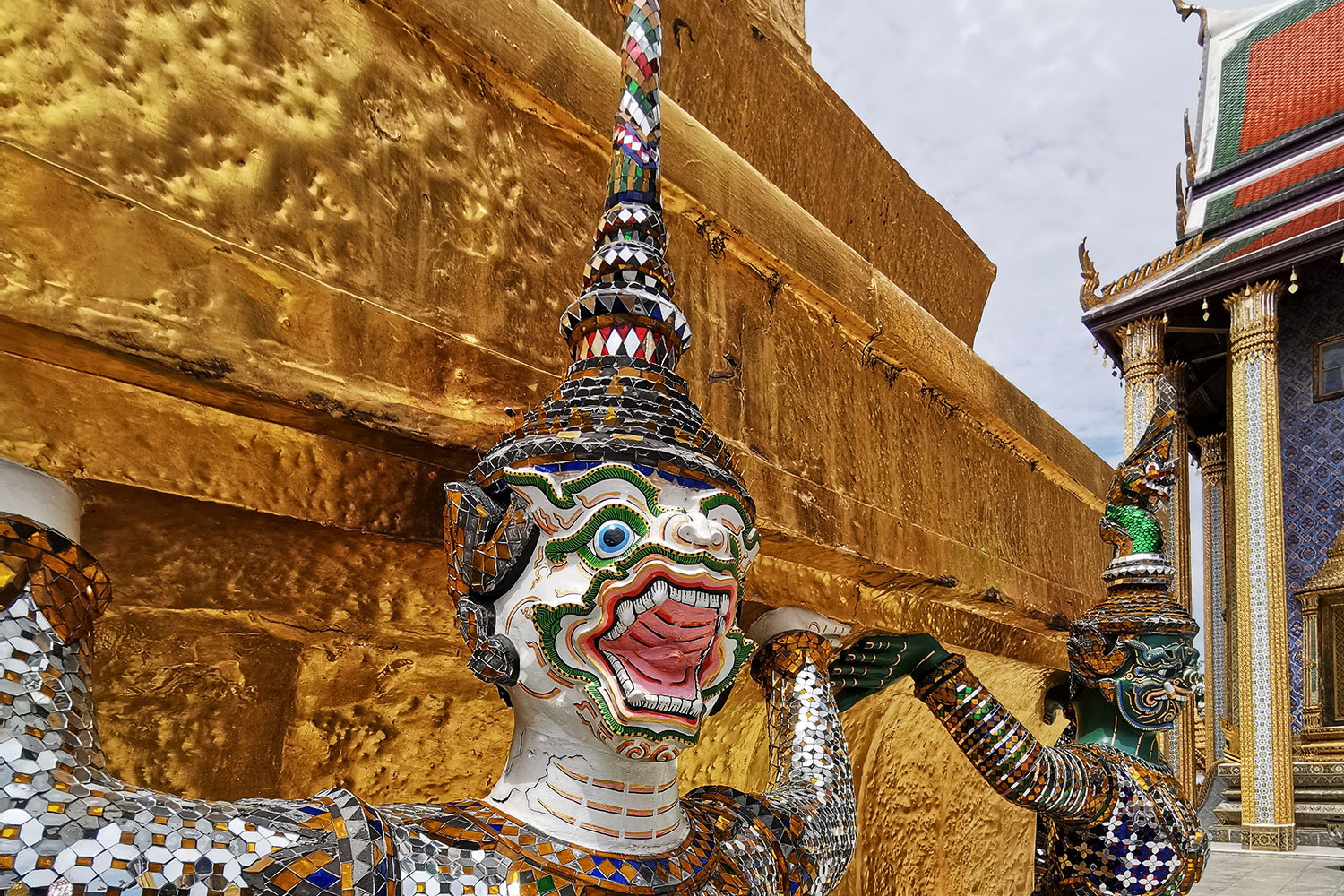
Entering the compound of Wat Phra Kaew, you’ll be greeted by an imposing figure that represents a hermit believed to have great knowledge of traditional medicine. As you walk through the royal temple, you’ll find tons of decorative sculptures which come in all shapes and sizes, from garudas and demons to monkey warriors and various other mythical creatures. If you visit the temple with children, tell them to count how many garudas they can find.
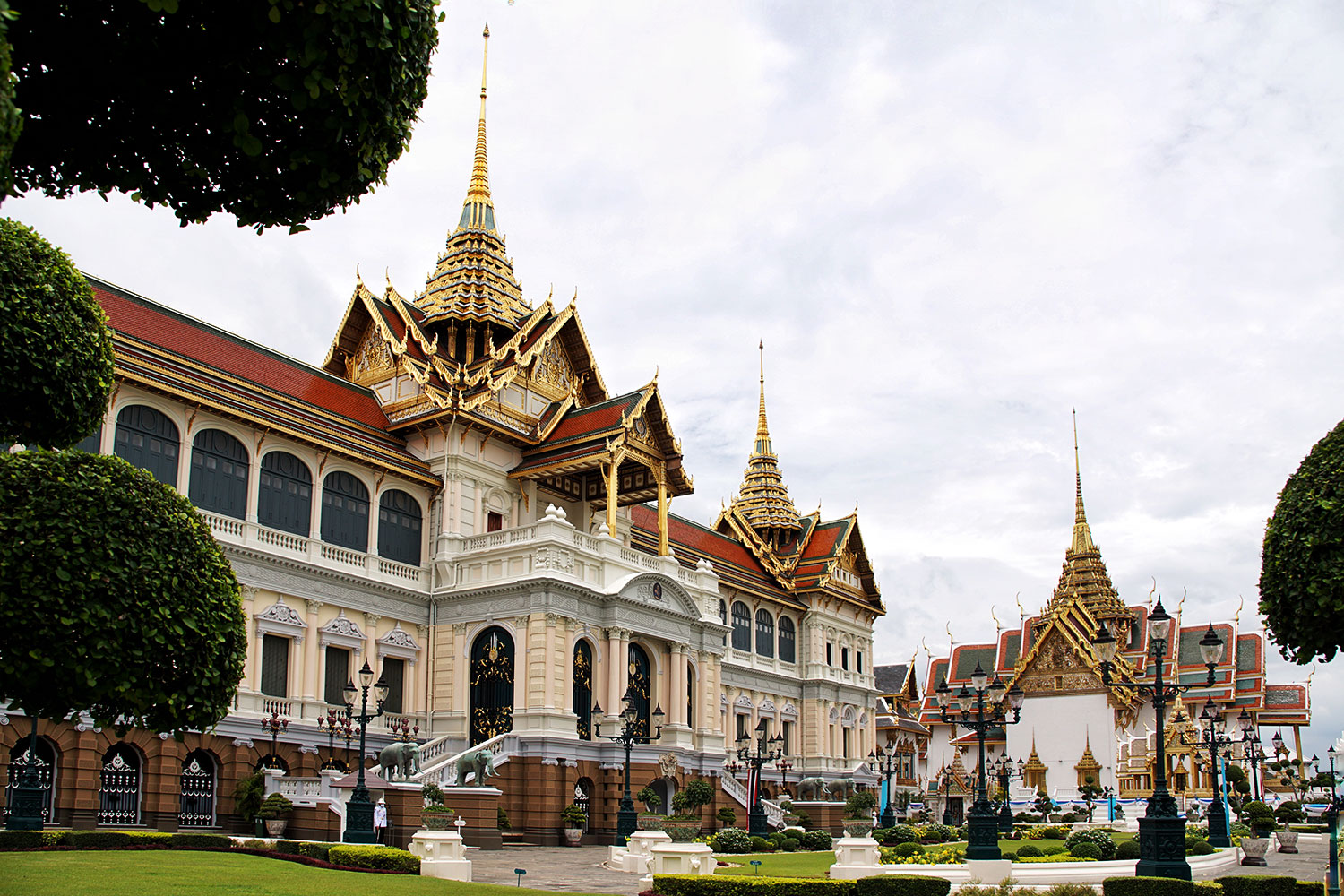
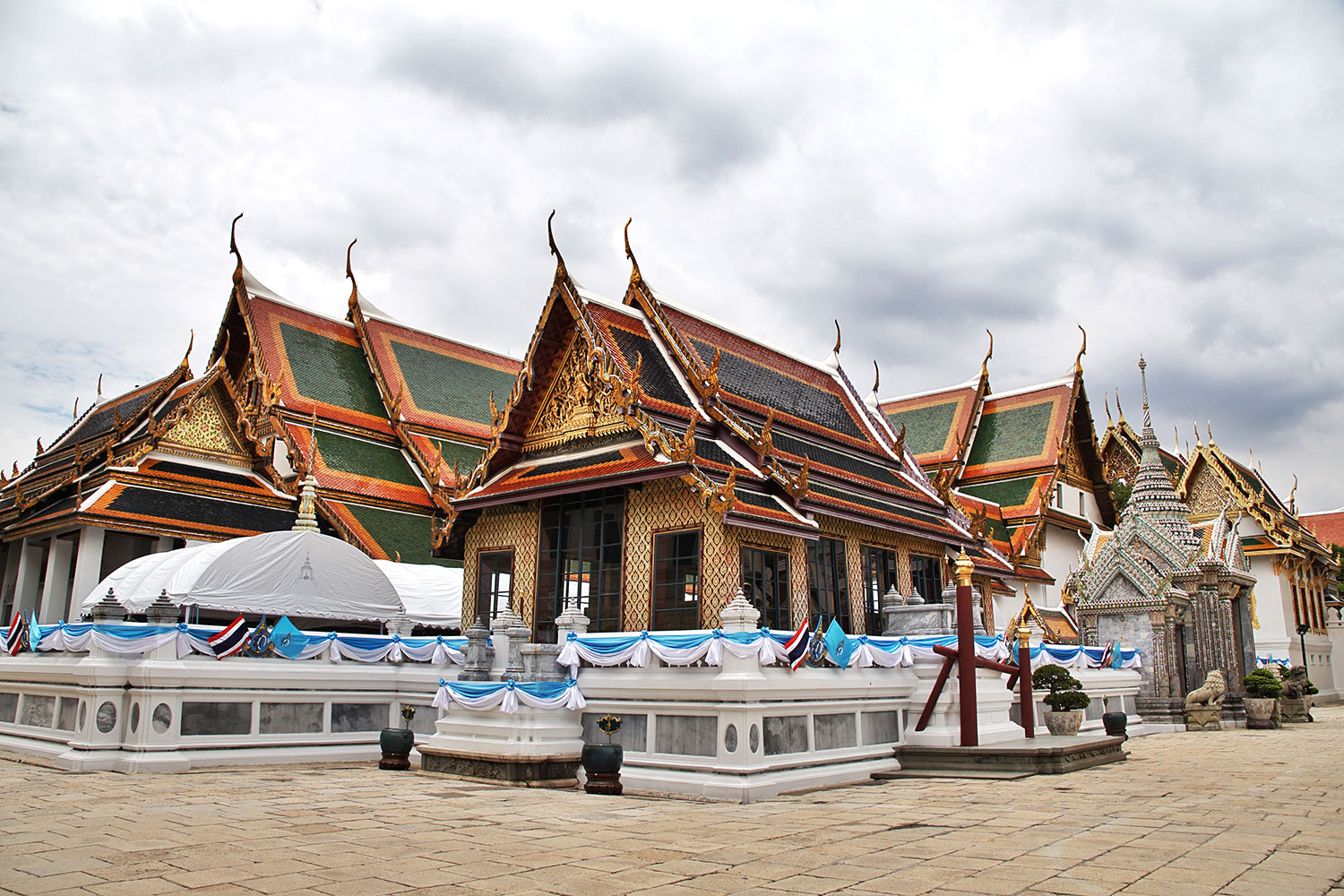
- Thanks to the MRT Blue Line, getting to Wat Phra Kaew and the Grand Palace is a breeze. The temple is just 10-15 minutes by foot from the Sanam Chai Station. Another convenient option is to take the Chao Phraya Express Boat and walk from Tha Chang Pier, which is just a stone's throw from the palace walls. And, of course, you can opt for a bus or taxi if you don't mind the traffic.
- The Temple of the Emerald Buddha welcomes visitors daily, from 8.30am-3.30pm. Its namesake museum and the Queen Sirikit Museum of Textiles are also open every day. The first from 8.30am-4pm, and the latter from 9am-4.30pm.